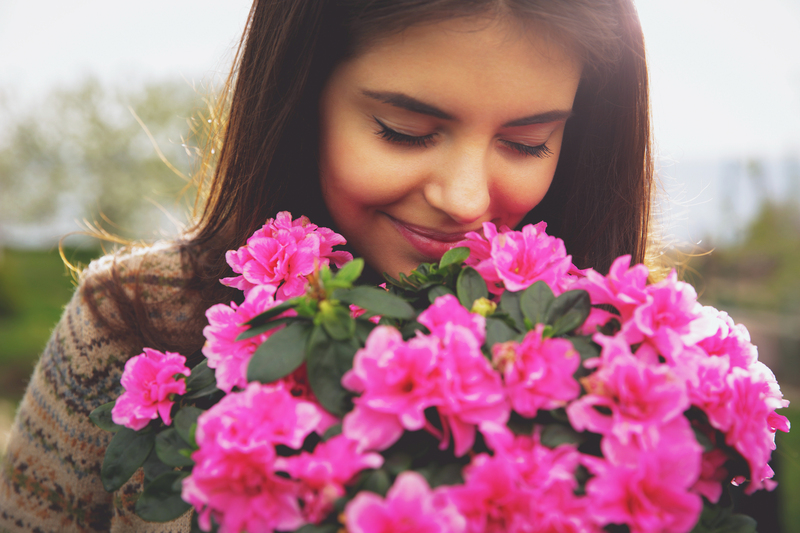Maximize the Lifespan of Your Poinsettias With Care
Posted on 23/08/2025
Maximize the Lifespan of Your Poinsettias With Care: The Ultimate Guide
Poinsettias are iconic symbols of the winter holiday season, adding vibrant color to homes and offices with their lush red, pink, or white bracts. While these plants are often considered temporary decorations, they can be enjoyed well beyond the holidays when given proper care. Whether you're a first-time poinsettia owner or a seasoned plant enthusiast, this comprehensive guide will show you how to maximize the lifespan of your poinsettias with care, ensuring they thrive long after the festivities fade.
Understanding Your Poinsettia: Origins and Characteristics
Before learning how to keep your poinsettia healthy, it's helpful to understand its background and natural preferences. Originating from Mexico and Central America, Euphorbia pulcherrima is known for its striking bracts, often mistaken for flowers. In its native habitat, the poinsettia is a perennial shrub that can grow several feet tall!
- Scientific Name: Euphorbia pulcherrima
- Common Name: Poinsettia
- Typical Lifespan: Months to years (with optimal care)
- Ideal Temperature Range: 60-70?F (15-21?C)
- Poisonous: Mildly toxic to pets and humans if ingested
With these insights, let's explore how you can ensure your poinsettia lives longer and stays vibrant.

Perfect Placement: Location Matters
Light Requirements
To maximize poinsettia longevity, choose a spot that offers plenty of bright, indirect sunlight. Direct sun can scorch the leaves, while too little light causes leaf drop and stunted growth. Place your poinsettia near an east- or west-facing window for the best results.
- Ideal: 6 hours of bright, filtered light daily
- Avoid: Drafty windows, heating vents, and cold glass
Temperature and Humidity
Extending the life of your poinsettia depends on maintaining stable room temperatures. Sudden fluctuations or temperatures below 55?F (13?C) can be fatal. These plants also thrive in moderate humidity--avoid extremely dry environments that can lead to leaf loss.
- Keep away from cold drafts and heat sources
- Use a humidifier or pebble tray if air is dry
Watering and Moisture Management
Improper watering is the top reason why poinsettias fail to thrive. Here's how you can maximize your poinsettia's lifespan through correct watering techniques:
How Often Should You Water?
Check the soil daily. When the top inch feels dry to the touch, it's time to water.
- Tip: Use room-temperature water
- Water thoroughly until excess drains from the bottom
- Never let the pot sit in standing water (remove foil wrap or decorative covers to check!)
Overwatering vs. Underwatering
Signs of Overwatering: Yellowing leaves, wilting, mushy stems, fungal growth
Signs of Underwatering: Drooping, dry or crispy leaves, premature leaf drop
Striking the right balance is crucial to help poinsettia plants live longer and maintain their beauty.
Feeding Your Poinsettia: Fertilization Tips
To increase the lifespan of your poinsettias, fertilize only when they are actively growing (typically spring and summer). During winter display, they do not require fertilizer.
- Type: Balanced, water-soluble fertilizer (e.g., 20-20-20)
- Frequency: Every 4-6 weeks post-bloom (February to September)
- Follow the label for dilution and application instructions
Remember: Over-fertilizing during the blooming phase can damage roots and shortens the plant's display period.
Protecting Poinsettias From Common Threats
Pest Prevention
Poinsettias are vulnerable to pests like whiteflies, aphids, spider mites, and fungus gnats. To keep your poinsettia alive longer, inspect the plant weekly and act promptly:
- Wipe leaves with a damp cloth to dislodge insects
- Use insecticidal soap or neem oil for serious infestations
- Separate infected plants to prevent the spread
Disease Defense
Root rot--caused by overwatering--poses the greatest threat. Adequate drainage and allowing the soil to dry slightly between waterings are your best defense. Powdery mildew, another concern, can be mitigated by ensuring proper air circulation around your plant.
Post-Holiday Care: Extending Poinsettia Beauty Year-Round
If you want to enjoy your poinsettia for years, follow this annual care calendar:
January-March: Maintain Holiday Display
- Continue regular watering and placement
- Remove spent leaves and bracts as needed
April: Begin Dormancy
- Gradually reduce watering as the plant enters rest
- Cut back stems to 4-6 inches above soil
- Move to a cool, lightly lit area (55-60?F/13-16?C)
May-June: Resume Growth
- Repot in fresh soil if root-bound
- Resume light, water, and fertilization
- Pinch back new growth to encourage bushiness
June-August: Summer Outdoors (Optional)
- Place outdoors in partial shade after danger of frost
- Avoid direct midday sun and strong winds
- Water and fertilize as new growth appears
October-November: Induce Color for Holidays
The secret to getting your poinsettia to rebloom is controlling light exposure. Starting in early October:
- Provide complete darkness for 14 hours each night (cover with a box or place in a closet)
- Expose to bright light for the remaining 10 hours daily
- Maintain a temperature of 65-70?F (18-21?C)
- Repeat process for 8-10 weeks to trigger bract coloration
Consistency is essential: one slip can hinder blooming!
Maximizing Poinsettia Longevity Indoors: Extra Tips
Choose Healthy Plants
Start strong by selecting poinsettias with vibrant, unblemished leaves and yellow-green buds (not open flowers). Check for sturdy stems and avoid plants with droopy bracts or signs of insects.
Protect During Transport
When bringing your poinsettia home, shield it from cold air and wind. Even brief exposure to temperatures below 50?F (10?C) can cause irreversible leaf drop.
Manage Decorative Wraps
Remove plastic or foil pot coverings before watering to prevent root rot. After draining excess water, you can replace these sleeves for appearance.
Pruning for Health
To prolong the bloom and life of your poinsettia, prune leggy stems in spring and throughout the growing season. This encourages fuller, more attractive plants and stimulates new bract development for next year's display.
Myths and Facts: Poinsettia Care Clarified
- Myth: Poinsettias are highly poisonous.
- Fact: They are only mildly toxic and rarely dangerous; skin may irritate, ingestion causes mild stomach upset in pets or children.
- Myth: They must be tossed after the holidays.
- Fact: With proper poinsettia care, these plants can thrive year after year and even rebloom!
- Myth: Poinsettias like low light.
- Fact: They thrive in bright, indirect sunlight. Inadequate light leads to leaf loss and faded bract color.
Troubleshooting Common Poinsettia Problems
-
Dropping Leaves:
- Often a symptom of drafts or sudden temperature changes
- Check for root rot (overwatering) or stress from too little light
-
Wilting or Dull Bracts:
- Underwatering is the most common cause
- Revive by watering and providing consistent humidity
-
No Color Change Next Season:
- Likely due to not enforcing complete darkness each evening in the fall
- Restart the light/dark schedule for another 8-10 weeks
-
Sticky Leaves or Webbing:
- Indicates pest infestation; treat as described above

Frequently Asked Questions About Prolonging Poinsettia Life
How long can a poinsettia live indoors?
With optimal care, poinsettias can brighten your home for several months--some enthusiasts keep their plants healthy and vibrant for many years by following the annual care cycle.
Is it possible to get a poinsettia to bloom again?
Yes, absolutely! Inducing rebloom takes patience, strict adherence to a light/dark cycle each fall, and healthy plant maintenance throughout the year.
Can I plant my poinsettia outdoors?
In warm climates (USDA zones 9 through 11), poinsettias can be transplanted outside after all danger of frost has passed. In colder zones, they must remain houseplants or be brought indoors each fall.
What should I do if my poinsettia gets leggy?
Prune stems back to promote bushier growth. Regular pinching during spring and summer helps maintain a compact, attractive shape.
Do poinsettias need special soil?
They perform best in a light, well-draining potting mix. Avoid heavy, clay-based soils that retain excessive moisture.
Conclusion: Maximize the Lifespan of Your Poinsettias With Care
Caring for poinsettias is more rewarding than many people realize. By providing the right light, temperature, and regular care, you can maximize the lifespan of your poinsettia and enjoy its festive beauty year after year. Remember to:
- Choose a healthy plant and proper location
- Water carefully--neither too much nor too little
- Protect from drafts and extreme temperatures
- Prune and fertilize as needed, especially during the growing season
- Follow the annual care cycle to induce reblooming
With these strategies, your poinsettia can become a beloved part of your indoor garden--not just in December, but all year long! Start today and share your thriving poinsettia success with friends and family.
For more plant care tips and seasonal advice, explore our website or join our newsletter!
Latest Posts
Low Maintenance Office Plants: Boost Your Space Effortlessly
Maximize the Lifespan of Your Poinsettias With Care
Floral Fantasies: Your Guide to Birthday Blooms







